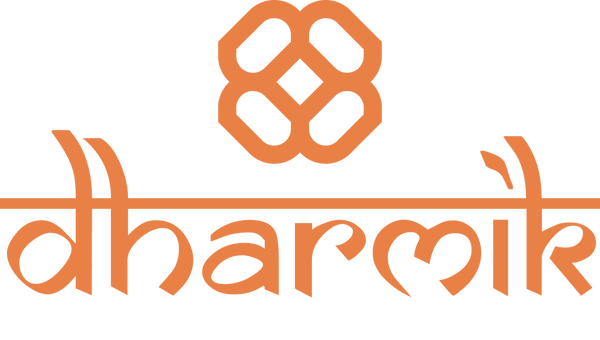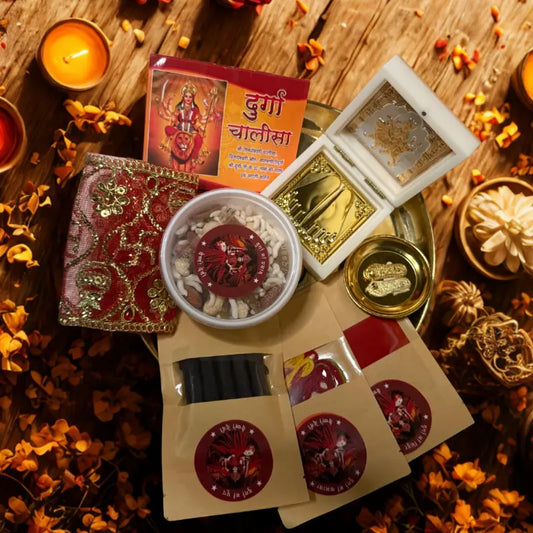
Famous Navratri Prasad from Vaishno Devi Temple – A Complete Guide
Share
In this blog, we will explore what makes the Vaishno Devi Navratri Prasad so special, what items are included in it, the significance of each offering, and how devotees can seek Mata Rani’s blessings even if they cannot travel to the temple physically. We will also look at the cultural and spiritual importance of Mata Rani Bhog and why this sacred Navratri temple food is cherished by devotees across the world.
Navratri is one of the most sacred and widely celebrated festivals in India, dedicated to the worship of Goddess Durga in her nine divine forms. For millions of devotees, visiting the Vaishno Devi Temple during Navratri holds a special significance. The temple, located in the Trikuta Hills of Jammu and Kashmir, is considered one of the holiest shrines of Mata Rani. Along with the spiritual energy of the shrine, one of the most divine aspects of this pilgrimage is the Vaishno Devi Navratri Prasad. This prasad is not just food – it is considered the blessings of Mata Rani herself.

The Spiritual Significance of Vaishno Devi Navratri Prasad
In Hindu tradition, prasad is not just food – it is considered an offering made to the divine and then distributed to devotees as a token of the deity’s blessings. During Navratri, when the energy of the goddess is believed to be at its peak, receiving prasad from the Vaishno Devi Temple becomes even more auspicious. Vaishno Devi Prasad, during Navratri, is specially prepared and offered to Mata Rani before being distributed to the devotees. It represents purity, devotion, and the divine connection between the devotee and the goddess.
Famous Items in Vaishno Devi Navratri Prasad
Each item in the prasad thali carries a deep spiritual meaning. Here are the most popular offerings that make up the Vaishno Devi Navratri Prasad:
- Dry Fruits (Mewa): Dry fruits such as almonds, cashews, raisins, and pistachios are considered sattvic and are believed to energize the body during fasting. They symbolize prosperity and good health.
- Mishri (Rock Sugar): Mishri represents sweetness and purity in life. It is offered to Mata Rani as a symbol of devotion and faith.
- Chana (Roasted Gram): Roasted black gram is a common part of Mata Rani Bhog and holds nutritional as well as spiritual value. It is simple, sattvic, and ideal for Navratri fasting.
- Coconut (Nariyal): The coconut represents selfless devotion and purity. Breaking a coconut before Mata Rani is considered auspicious.
- Honey and Panchamrit: Sometimes, Panchamrit (a mixture of milk, curd, honey, ghee, and sugar) is distributed as a sacred drink.
- Holy Charan: Amrit and Mata Ki Chunri Apart from edible items, many devotees also receive Charan-Amrit (holy water) and Mata ki Chunri, which is tied to the idol and considered extremely auspicious to keep at home.
These prasad items are simple yet powerful, as they are charged with the divine energy of Vaishno Devi.
History and Legends Behind Vaishno Devi Prasad
According to legend, Mata Vaishno Devi is a combined manifestation of the Goddesses Lakshmi, Saraswati, and Kali. It is believed that she blesses devotees with health, wealth, and wisdom. Offering prasad is symbolic of sharing one’s gratitude and devotion. Historically, devotees would carry whatever they could from nearby villages and offer it to the goddess. Over the centuries, this evolved into a traditional prasad thali, distributed to every pilgrim as a blessing from Mata Rani.

Why Navratri Temple Food is Special
The food offered during Navratri is sattvic – meaning it is pure, clean, and high in prana (life energy). It excludes onion, garlic, and other tamasic foods, focusing instead on ingredients that calm the mind and enhance devotion. The Navratri temple food at Vaishno Devi is prepared with utmost cleanliness and devotion, ensuring that devotees receive the goddess’s blessings in the purest form.
Mata Rani Bhog and Its Cultural Relevance
Offering Mata Rani Bhog during Navratri is an age-old tradition. Devotees prepare special dishes such as singhare ke atte ka halwa, kuttu ke atte ki puri, and sabudana khichdi at home and offer them to the goddess before eating. The bhog is symbolic of surrendering one’s ego and seeking divine blessings.
Vaishno Devi Temple follows this tradition with strict discipline, making sure that the prasad is first offered to Mata Rani before it reaches devotees. This is why Prasad from Vaishno Devi is considered so powerful.
How to Get Vaishno Devi Navratri Prasad at Home
If you cannot travel to the Vaishno Devi Temple during Navratri, there are now reliable ways to receive the prasad at home. Many online devotional platforms, including Dharmik, offer authentic Vaishno Devi Navratri Prasad delivery across India and not just that, they also offer Ayodhya Prasad Boxes and Vrindavan Prasad Boxes. This makes it possible for devotees to stay connected with Mata Rani’s blessings even from afar.
At Dharmik, we ensure that the prasad is freshly packed, sanctified, and delivered with devotion so that your Navratri celebrations remain spiritually fulfilling.
Benefits of Receiving Navratri Prasad
- Spiritual Fulfilment – Brings peace and positivity into the home.
- Divine Blessings – Believed to remove obstacles and attract prosperity.
- Cultural Connection – Keeps traditions alive for future generations.
- Good Health – The satvic food items are nutritious and light on the stomach.

FAQs about Vaishno Devi Navratri Prasad
Q1: What is included in Vaishno Devi Navratri Prasad?
A: Typically, the prasad includes dry fruits, mishri, roasted chana, coconut, and holy water (charan-amrit). Some prasad kits also include Mata ki Chunri.
Q2: Can I order Vaishno Devi Prasad online?
A: Yes! Platforms like Dharmik make it easy for devotees to receive authentic prasad directly at home.
Q3: Is Vaishno Devi Prasad suitable for fasting?
A: Absolutely. The prasad items are sattvic and are perfect for Navratri fasts.
Q4: How is the prasad prepared?
A: It is prepared in a hygienic and spiritually pure environment, offered to Mata Rani first, and then distributed to devotees.
Q5: What is the best time to consume the prasad?
A: You can consume it right after receiving it, preferably after doing your daily puja during Navratri.
Q6: How do I store Vaishno Devi Prasad?
A: Keep dry items in an airtight container. Consume within a few days to maintain freshness.
Q7: Are there special prasad offerings for each of the nine days?
A: Yes, many devotees prepare different bhogs each day dedicated to the specific form of Goddess Durga being worshipped.
The Vaishno Devi Navratri Prasad is much more than food—it is a divine blessing that carries Mata Rani’s energy into the lives of her devotees. Whether you are visiting the holy shrine in person or receiving the prasad at home through trusted services like Dharmik, what matters most is the faith and devotion with which you accept it.
This Navratri, let Mata Rani’s blessings fill your home with positivity, prosperity, and peace.
👉Buy your Navratri essentials here.



